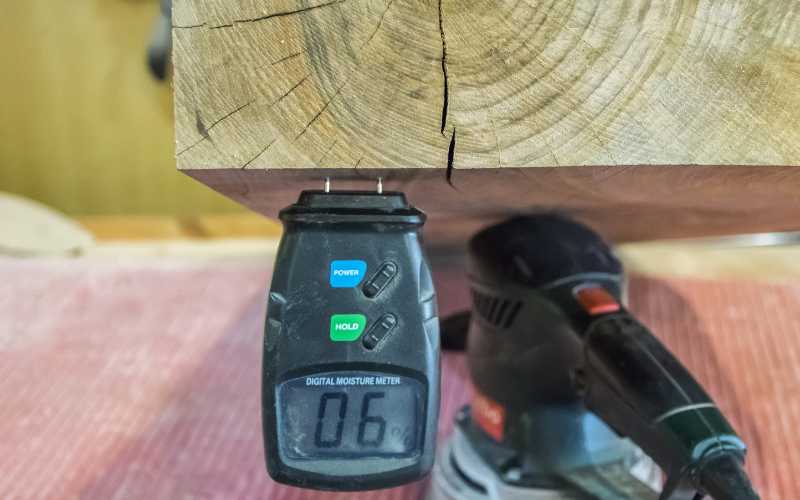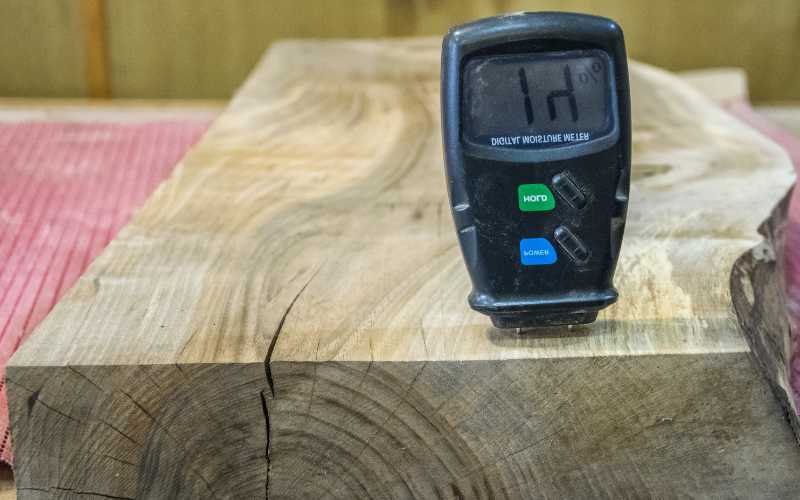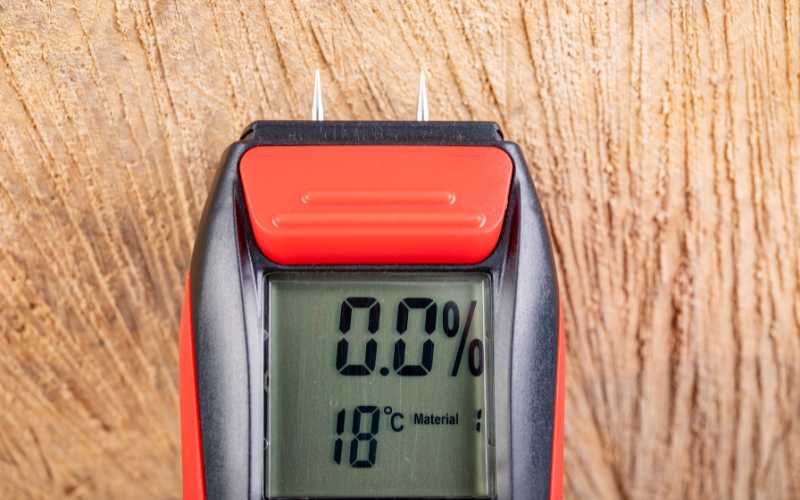A wood moisture meter is not the most expensive of the different woodworking tools available today. In fact, you can easily get one for as low as 25 bucks (though it might not be the best) if you really don’t want to spend much on it. However, it’s easily one of the most important tools every woodworker needs in their toolbox. Without it, a lot of things can go wrong later after you’re done with a project, even though your project came out perfect initially.
The basic thing a wood moisture meter does is that it shows the moisture content of the wood or lumber you want to use for a project. In other words, it tells you if the wood is dry enough to use.
This is a very important thing for you to know because although wood have many desirable properties that makes it very useful for building, it also has some undesirable properties as well.
Wood is a hygroscopic material. That means it is a material that can easily absorb water from the surrounding air and also release the water too, depending on the humidity of the air surrounding it.
As a result of this water absorption and release, wood expands and also shrinks itself depending on whether it is absorbing water or releasing it. If its absorbing water from the surrounding air, it expands, but if it’s releasing the water, it shrinks.
This singular characteristic of wood can cause serious issues later if the moisture content of wood is not taken into account before using it for a project. The expansion and contraction of wood due to its moisture content can cause deformity in your project later on.
That is why you should ensure that your wood is dry enough before using it for your project, and for you to know that, you need a wood moisture meter.
Table of Contents
How To Determine if Your Wood is Dry Enough for Your Projects

The moisture content of freshly cut lumber is usually between 75 and 100 percent. Sometimes however, it can be more, even going up to 200 percent.
With moisture content less than 100 percent, it means the water content of the wood is less than the dry mass of the wood. If it is 100 percent, then it means the water content is equal to the dry mass.
On the other hand, if it is higher than 100 percent, then it means there’s more water in it than there dry wood fibers.
For wood to be usable for furniture and other woodworking projects, the moisture content has to be no where near 100. It’s usually between 8 and 10 percent, sometimes a bit more.
This however, does not mean that for every location, the moisture content of the wood you use must be between 8 and 10 percent.
The relative humidity of every geographic region is different, and that affects the how much water wood retains.
If the humidity in a particular location is high, then obviously the wood will absorb more water. If it’s low, then it will release water and dry up better.
That is why it’s important to acclimate wood in the location in which it will be used before using it. Acclimating means allowing the wood to adjust to it’s new surrounding by leaving it there for some time.
When it is acclimated in the new environment, it will reach its equilibrium moisture content (EMC). That is, it will neither gain or lose its moisture after some time, and it’s water content will remain the same.
Using a moisture meter will allow you to check the water content of the wood once it’s in the location you’ll be using it, and when this water content doesn’t change anymore, then it has reached its equilibrium level.
That is how dry enough it should be for that environment. In other words, wood doesn’t have to have the same EMC in every environment. It doesn’t have to dry up to the same level in every environment.
For my region it can be 8 percent, and for your region it can be 13 percent. It all depends on the relative humidity in the different regions.
So, having a moisture meter will allow you to check the moisture content of the wood you want to use, and therefore find out when it’s no longer losing or gaining water from the air around it.
Types of Moisture Meters and How to Use Them
There are two main types of moisture meters. Which are: Pin-type and pinless.
Pin-Type Wood Moisture Meters

Pin-type moisture meters depend on the fact that water or moisture conducts electricity and thus makes use of the resistance in electrical conduction in wood to determine it’s water content.
The dryer the wood is, the more resistant it will be to electrical current because there’s less water in it to conduct the current.
On the other hand, the wetter it is, the less resistant it will be to electrical current because there’s more water or moisture in it.
The pin-type wood moisture meters usually come with 2 penetrating electrodes that are used to penetrate the wood and measure the amount of electrical resistance between the two electrodes.
You must however not that, when using this type of meter, the two electrodes should be place across the grain of the wood, and not with the grain, so as to get accurate measurements.
When you go with the grain, it’s possible you’re just sampling a single fiber or grain of the wood, which might not give you accurate measurements, because that fiber might be dryer or wetter than the next 2 or 3 fibers close to it.
So, it’s better to go across the grain of the wood so, the pins can sample more wood fibers and thus produce the most accurate results.
Pinless Wood Moisture Meters

The pinless wood moisture meter features a flat electromagnetic sensor at the back of the device that detects the MC of the wood when it’s laid flat on the surface.
These types are easier to use, because you don’t have to puncture the wood surface to take a reading. Just lay it flat on it, and it will show the MC.
They also provide a more accurate measurement since the electromagnetic sensor at the back of the meter covers a wider area than the 2 pins of a pin-type meter. Thus, covering more wood fibers and producing a better reading.
Because it doesn’t puncture the wood, it’s also very suitable for high quality wood materials like hardwood floors, furniture and cabinet pieces that a pin-meter might rather scratch or damage the surface.
Which Moisture Meter Should You Use

Like I mentioned earlier, there are cheap wood moisture meters and expensive ones. Most of the expensive ones are usually the pinless ones, although there are some pin-type ones that are also a bit pricey.
Depending on your budget you can choose to buy a cheap one or an expensive one. What you should take note of however is that some of the cheap ones might not provide accurate measurements.
For instance, if you buy fresh rough cut lumber that has not been dried in a kiln, or you leave in a very humid environment and the meter you have is reading 2 percent moisture content, then you know that something is wrong with it.
You need to compare it with the reading from another meter, maybe read reviews and find one with a bit more positive feedback from users.
Apart from the price, you also have to decide whether to go for a pin-type wood moisture meter or a pinless type.
Pinless moisture meters are much more easier to use and provides a bit more accurate results, but they rely on the surfaces of the material to be very flat and free from sawdust in order to be truly accurate.
On the other hand, a pin-type meter can be used on a rough cut wood, even firewood because you just have to stick the 2 pins into the wood. That means the surface doesn’t have to be flat.
For builders, home remodelers, finish carpenters and furniture makers, a pinless moisture meter is the way to go because almost all the materials used are very flat and sometimes the surfaces are already finished and thus can get damaged if a pin-type meter is used.

